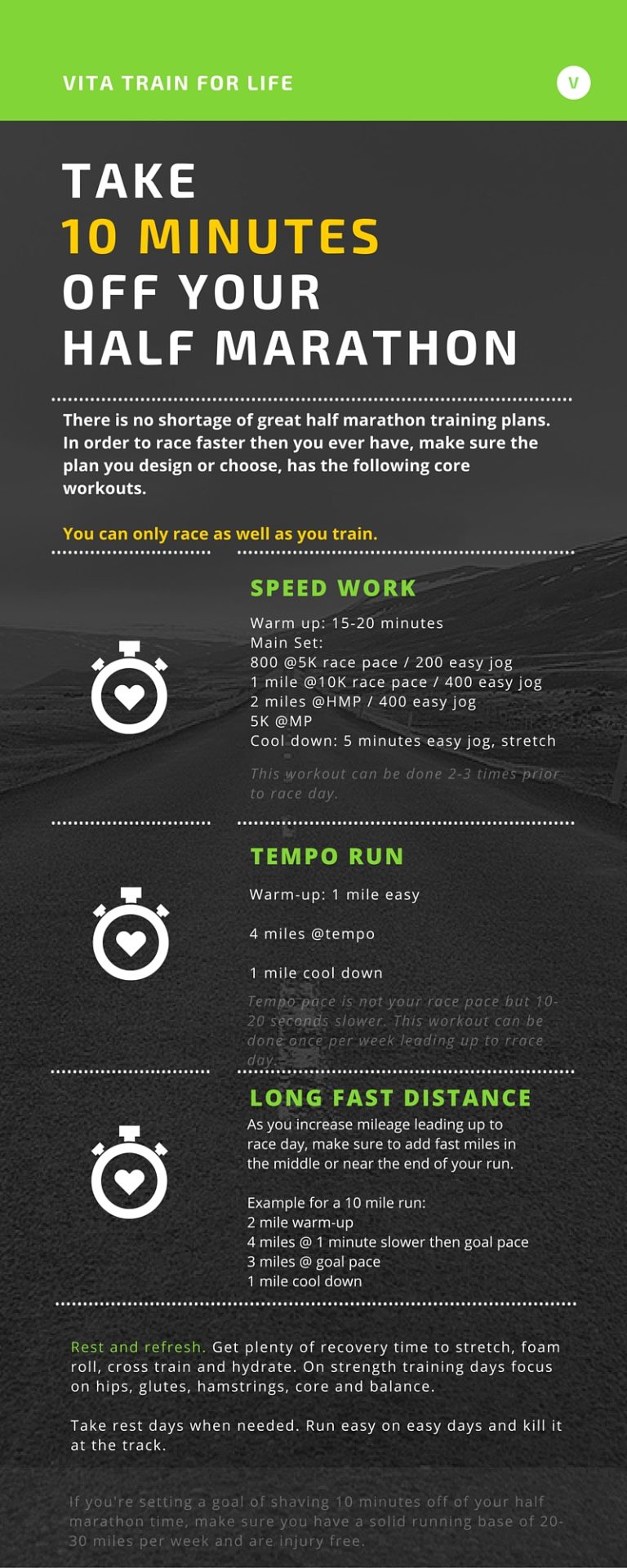How to Prevent Marathon Wall
Prevent Marathon Wall by gradually increasing mileage and incorporating strength training exercises to build endurance. Running a marathon requires physical and mental stamina that can sometimes be challenged by hitting a wall, also known as the marathon wall.
The marathon wall refers to a point during the race when the body starts to fatigue and the runner experiences a sudden decrease in energy levels. This can make it extremely difficult to continue running and can hinder performance. However, there are strategies that can be employed to prevent hitting the marathon wall.
By carefully increasing mileage and incorporating strength training exercises into your training regimen, you can build endurance and reduce the likelihood of hitting the wall. We will explore these strategies in detail to help you avoid the marathon wall and achieve your marathon goals.

Credit: marathonhandbook.com
Understanding Marathon Wall
Discover strategies to avoid hitting the Marathon Wall by adopting proper training, nutrition, and pacing techniques. Stay consistent with fueling and hydration throughout the race to prevent fatigue and optimize performance. Understanding the Marathon Wall is key to a successful race day experience.
Understanding Marathon Wall Marathon wall, also known as hitting the wall, refers to the point during a marathon when a runner experiences extreme fatigue and a significant decrease in performance. This phenomenon is typically associated with the depletion of glycogen stores in the muscles, leading to a feeling of extreme exhaustion and the need to slow down or even stop. Understanding the factors contributing to hitting the marathon wall and recognizing the signs of this condition is crucial for runners who aim to prevent it and improve their marathon performance. Factors contributing to hitting the Marathon Wall 1. Inadequate nutrition and hydration: Insufficient intake of carbohydrates and fluids before and during the race can lead to early exhaustion and hitting the wall. 2. Lack of training: Inadequate training and preparation can lead to faster depletion of glycogen stores, increasing the likelihood of hitting the marathon wall. 3. Pacing strategy: Starting too fast and running at an unsustainable pace can lead to premature depletion of energy reserves, contributing to hitting the wall. Signs of hitting the Marathon Wall 1. Sudden fatigue: a sharp and unexpected drop in energy levels and perceived effort. 2. Muscle weakness: the sensation of heavy, tired, and weak muscles, making it difficult to maintain pace. 3. Mental fog: difficulty with focus and concentration, and a feeling of mental fatigue. By understanding these factors and signs, runners can take proactive measures to prevent hitting the marathon wall and optimize their performance.Training Strategies
Training for a marathon can be a daunting task, but with the right strategies in place, you can avoid hitting the dreaded marathon wall. Incorporating long runs and introducing speed workouts into your training regimen are two effective ways to improve your endurance and pace. By following these training strategies, you’ll be well-prepared for the challenges that lie ahead on race day.
Incorporating Long Runs
Long runs are an essential component of marathon training as they help build both physical and mental endurance. By gradually increasing the distance of your long runs, you give your body time to adapt and become more efficient at utilizing energy reserves. Aim to complete at least one long run per week, gradually adding distance to simulate the demands of the marathon course. This will not only improve your physical fitness but also help you develop mental toughness, enabling you to push through challenging moments during the race.
When incorporating long runs into your training plan, it’s important to:
- Start with a distance that challenges you but is still within your capabilities.
- Gradually increase the distance of your long runs to avoid overtraining and the risk of injury.
- Consider running at a slower pace than your goal marathon pace to focus on endurance rather than speed.
- Hydrate and fuel properly before, during, and after each long run to optimize your performance and recovery.
Introducing Speed Workouts
Speed workouts are another effective training strategy to prevent hitting the marathon wall. By incorporating structured intervals and tempo runs into your training plan, you can improve your running economy and increase your overall speed. These workouts help your body become more efficient at utilizing oxygen, enabling you to sustain a faster pace for longer periods.
When introducing speed workouts into your training plan, consider the following:
- Include a variety of speed workouts, such as intervals, hill repeats, and tempo runs, to target different aspects of your running performance.
- Schedule speed workouts on non-consecutive days to allow for proper recovery and minimize the risk of injury.
- Gradually increase the intensity and duration of the speed workouts as your fitness improves.
- Warm up adequately before each speed workout and cool down afterward to prevent muscle strain and promote recovery.
By incorporating long runs and introducing speed workouts into your marathon training, you can improve your endurance, speed, and mental resilience. These training strategies will help you avoid hitting the marathon wall and increase your chances of crossing the finish line with a sense of accomplishment.
Nutritional Tips
Proper nutrition plays a crucial role in helping runners avoid the dreaded marathon wall during races. By focusing on carb-loading and implementing effective hydration strategies, you can ensure that your body is fueled and hydrated for optimal performance. Let’s explore these nutritional tips in detail:
Importance Of Carb-loading
Carbohydrates are a key source of energy for marathon runners. They provide the necessary fuel to sustain physical activity for extended periods. It’s important to consume enough carbohydrates in the days leading up to a race to fully stock your glycogen stores. This practice, commonly known as carb-loading, increases the amount of glycogen available for your body to use during prolonged exercise.
During carb-loading, focus on complex carbohydrates such as whole-grain bread, pasta, brown rice, and oats. These foods release energy slowly, providing a sustained fuel source. Avoid sugary snacks and refined carbohydrates, as they can lead to rapid energy spikes and crashes.
Hydration Strategies During Training And Races
Staying properly hydrated is paramount to maintaining peak performance during a marathon. Dehydration can lead to fatigue, muscle cramps, and even heatstroke. Here are some hydration strategies to keep in mind:
- Drink water consistently: Ensure you drink water at regular intervals throughout the day to stay hydrated. Carry a reusable water bottle with you during training sessions and races.
- Electrolyte balance: Electrolytes are minerals, such as sodium and potassium, that help regulate fluid balance in the body. Include sports drinks or electrolyte tablets in your hydration routine, especially during long runs or races lasting more than an hour.
- Weigh yourself: Monitor your weight before and after training sessions to assess your hydration levels. If you’ve lost more than 2% of your body weight, it’s a sign that you need to hydrate more.
- Practice drinking during runs: Train your body to tolerate drinking fluids during runs by incorporating it into your training routine. Experiment with different fluids and find what works best for you.

Credit: www.runnersworld.com
Mental Preparation
Mental preparation is a vital aspect of preventing the dreaded marathon wall. Developing a positive mindset and using visualization techniques can help marathon runners overcome mental barriers and sustain their performance throughout the race.
Developing A Positive Mindset
Building a positive mindset is crucial for marathon runners to tackle the mental challenges of the race. It involves focusing on positive affirmations, such as “I am strong” and “I can push through this challenge,” to combat negative thoughts and self-doubt. By practicing self-encouragement and embracing optimistic thinking, runners can fortify their mental resilience.
Visualization Techniques
Visualization can be a powerful tool for mental preparation. It involves creating vivid mental images of successfully completing the marathon, visualizing the route, and imagining crossing the finish line with a sense of accomplishment. By repeatedly visualizing a positive outcome, runners can instill confidence and reduce performance anxiety.
Race Day Strategies
On race day, implementing effective strategies can help you prevent hitting the dreaded marathon wall. Proper pacing and utilizing aid stations strategically are crucial for a successful race. Let’s delve into key race day tactics:
Pacing During The Race
Avoid sprinting at the start and maintain a steady pace throughout the race to conserve energy.
Using Aid Stations Effectively
Hydrate and refuel regularly at aid stations to maintain performance and avoid dehydration.

Credit: middleagemarathoner.com
Frequently Asked Questions Of How To Prevent Marathon Wall
How Do You Avoid The Wall In A Marathon?
To avoid hitting the wall in a marathon, pace yourself properly and stay hydrated and fueled. Train your body to sustain long distances and focus on mental toughness. Gradually increase your mileage and practice different strategies to find what works best for you.
How Can Hitting The Wall Be Prevented?
To prevent hitting the wall, ensure proper hydration, maintain a balanced diet, get enough rest, gradually increase workout intensity, and listen to your body’s signals.
What To Do If You Hit A Wall While Running?
If you hit a wall while running, slow down your pace, take deep breaths, and drink water to hydrate. Stretch your muscles and focus on good form. If necessary, walk for a bit or take a short break. Stay motivated and push through any mental blocks.
Conclusion
By following a well-rounded training and nutrition plan, staying mentally focused, and pacing yourself effectively, you can significantly reduce the risk of hitting the marathon wall. Remember to listen to your body and adjust your strategies as needed to ensure a successful and enjoyable race day experience.






